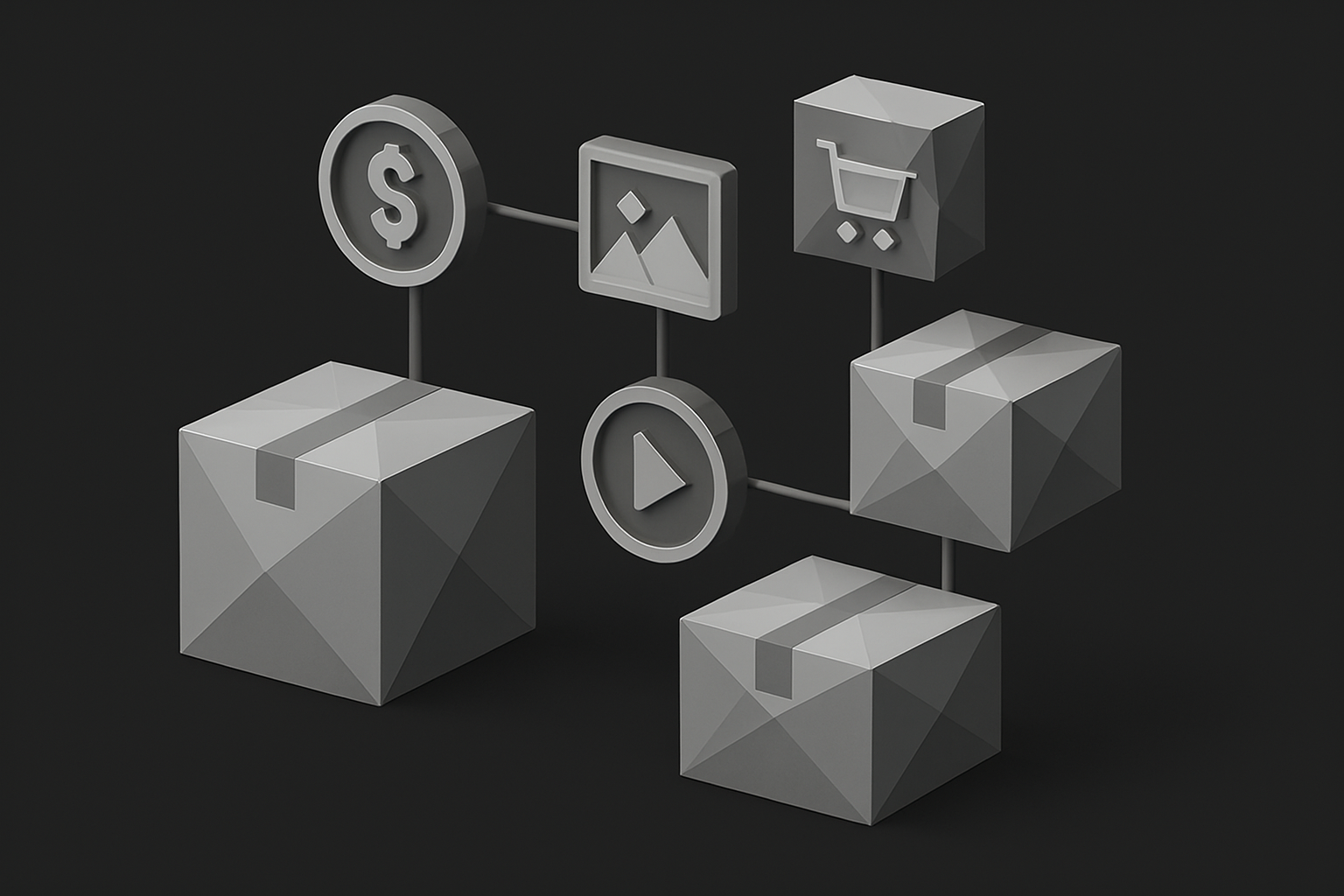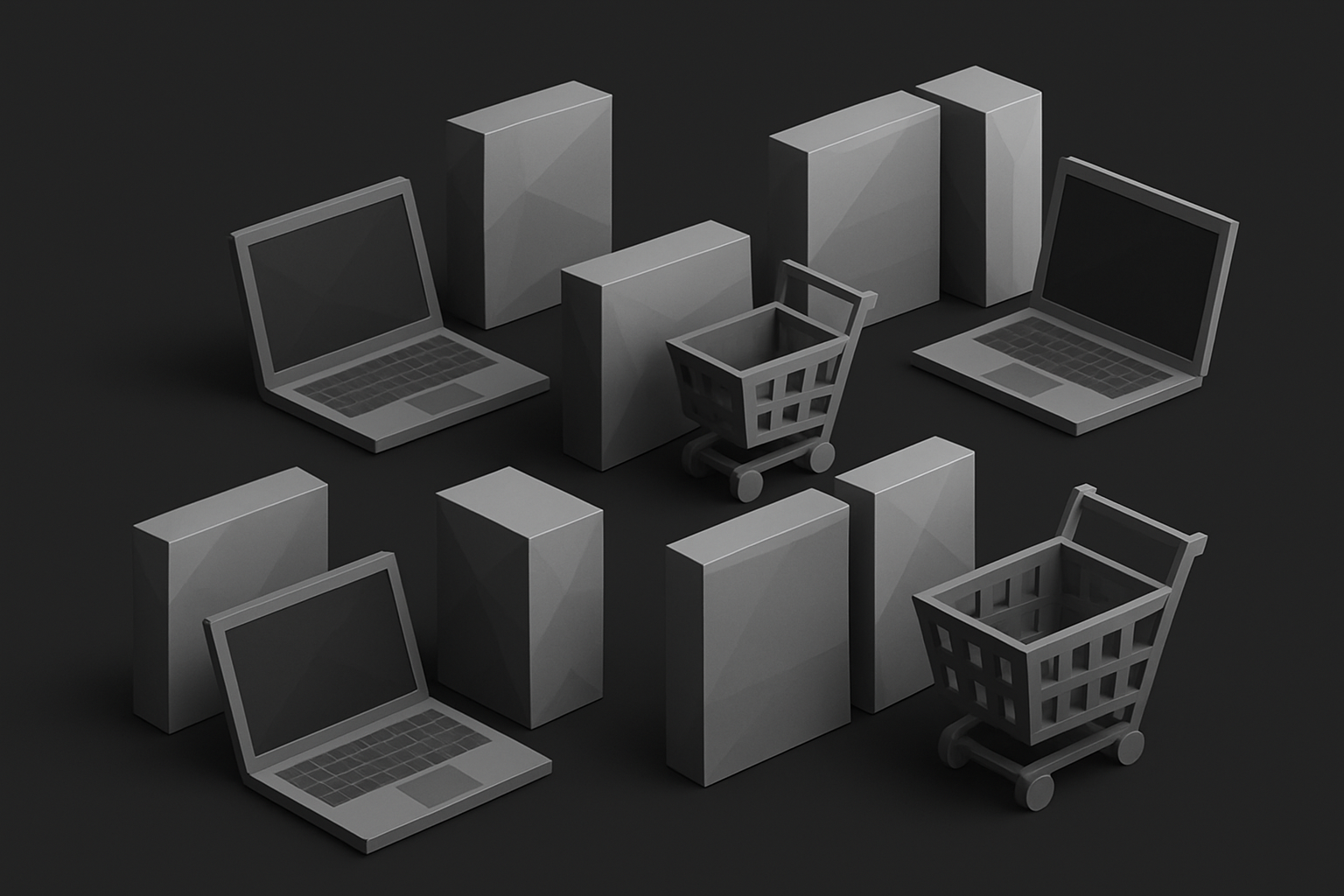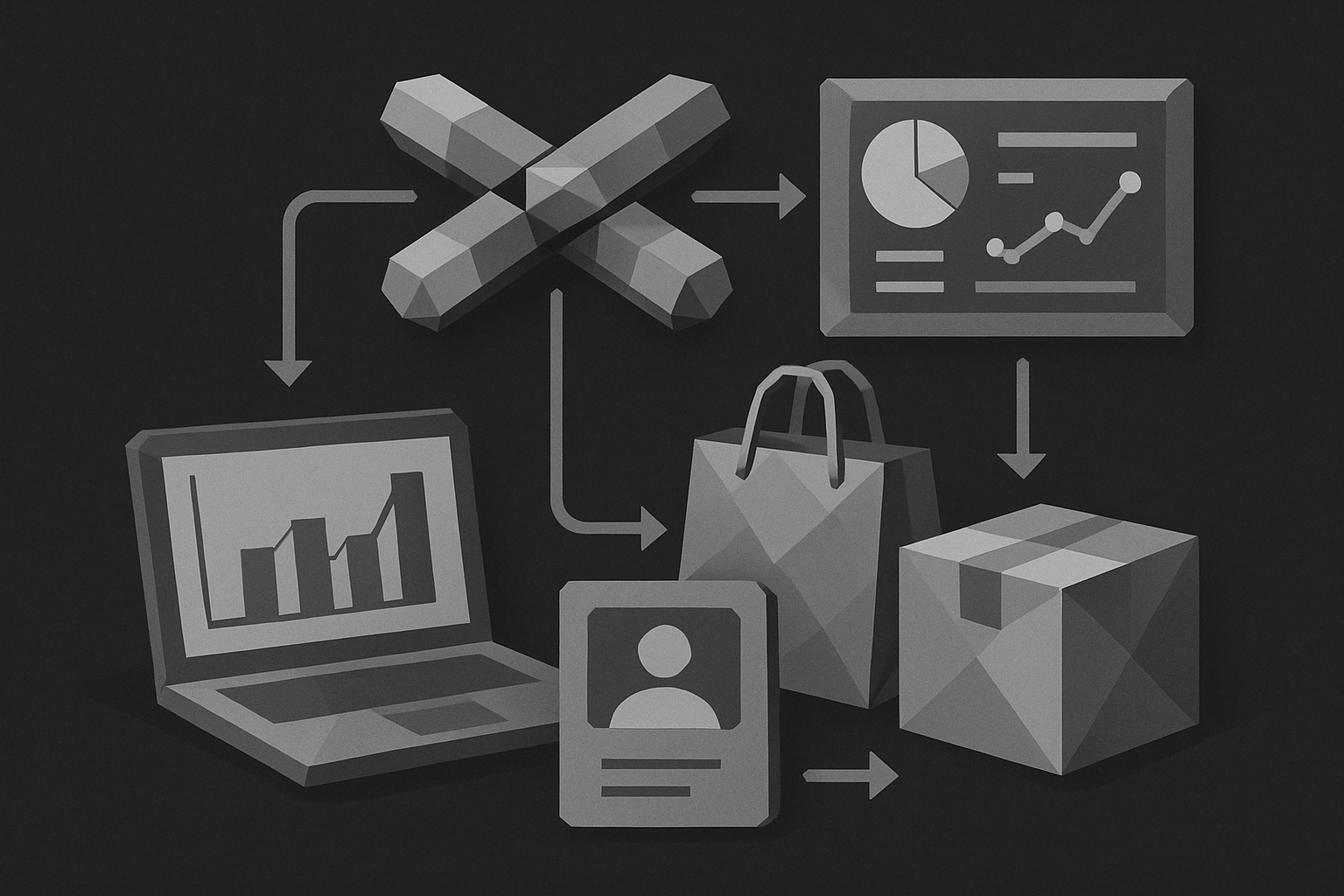In 2025, price bundling is more than just a sales tactic—it’s a strategic lever for maximizing revenue and building customer loyalty in today’s digital marketplace.
This guide unlocks the secrets behind the most effective price bundling strategies, revealing their benefits and giving you actionable steps for immediate implementation.
Whether you’re a business owner, marketer, or digital entrepreneur, you’ll gain up-to-date insights and practical frameworks for leveraging price bundling to drive growth.
Ready to outpace the competition? Dive in as we define price bundling, explore proven strategies, weigh pros and cons, and walk you through real-world examples and step-by-step frameworks for building your own profitable bundle offers.
What is Price Bundling?
Price bundling is a powerful pricing approach where businesses sell multiple products or services together for a single, often discounted price. Instead of buying items separately, customers get a bundle—making the offer more attractive and cost-effective.
This strategy stands apart from cross-selling (suggesting related products) and upselling (encouraging a higher-priced option) because price bundling focuses on creating value in the package itself. When done right, it boosts perceived value for both buyers and businesses.
Many industries rely on price bundling. Ecommerce brands offer curated sets, SaaS companies bundle software tools, telecom providers combine plans, and digital creators package courses or templates. For example, Glossier’s beauty sets, Microsoft Office 365, and popular meal kit subscriptions all use this model.
A Shopify study found that price bundling can increase average order value and customer satisfaction by simplifying choices and delivering savings. It also helps businesses introduce new products and clear out slow-moving inventory—two common challenges in fast-paced markets.
To dive deeper into definitions and bundling methods, check out this Product Bundling 101 Guide.

Definition and Core Concepts
At its core, price bundling means offering a group of products or services together for one combined price. This is different from simply recommending related items (cross-selling) or enticing customers to upgrade (upselling).
The key advantage of price bundling is the enhanced perceived value. Customers feel they’re getting more for less, which can drive higher satisfaction and loyalty. For businesses, it’s a way to increase revenue, streamline marketing, and introduce new products without overwhelming buyers.
Industries that frequently use price bundling include:
- Ecommerce (curated product sets)
- SaaS (software suites)
- Telecom (combined phone, internet, and TV plans)
- Digital products (courses, templates, or tools)
Examples:
- Glossier’s beauty sets combine skincare and makeup.
- Microsoft Office 365 bundles essential business apps.
- Meal kit subscriptions offer weekly ingredient bundles.
Data shows price bundling can raise average order value and help clear inventory—making it a win-win for brands and customers alike.
Types of Price Bundling
There are several types of price bundling, each with a unique approach:
- Pure bundling: Products are only available as part of a bundle (think subscription boxes).
- Mixed bundling: Customers can buy items separately or as a bundle, like Zoho One versus individual apps.
- Leader bundling: A main product is paired with useful add-ons—Fly By Jing’s Hot Pot Starter Set is a great example.
- Joint bundling: Two or more complementary products are sold together, such as a book paired with a bottle of wine.
- Customizable bundling: Customers pick and choose to create their own bundles.
Here’s a quick comparison:
| Type | Customer Choice | Example |
|---|---|---|
| Pure bundling | Low | Subscription boxes |
| Mixed bundling | High | Zoho One suite |
| Leader bundling | Medium | Hot Pot Starter Set |
| Joint bundling | Medium | Book + wine pairing |
| Customizable | Highest | Build-your-own meal kit |
Choosing the right price bundling type depends on your products, goals, and what your customers value most. Each method can help you stand out, maximize sales, and keep your brand top-of-mind in 2025.
Benefits of Price Bundling in 2025
Unlocking the full potential of price bundling in 2025 means going beyond simple discount offers. Today’s bundles are designed to maximize revenue, delight customers, and streamline business operations—all while standing out in crowded digital markets.

Increased Revenue and Profitability
Price bundling is a proven strategy for boosting revenue and profitability. By offering multiple products or services together, businesses encourage customers to purchase more than they might otherwise. This naturally increases the average order value, which is especially impactful in ecommerce and SaaS industries.
Additionally, price bundling is a smart way to move excess or slow-moving inventory. For instance, pairing popular Lenovo laptops with Microsoft Office not only adds value for the customer but also increases the total transaction size. Research shows that bundles can improve profitability even during periods of decreased customer spending, making them a reliable lever for financial stability.
- Drives multi-item purchases
- Helps clear old stock
- Boosts margins during slow periods
Enhanced Customer Experience and Loyalty
An often-overlooked benefit of price bundling is the positive impact on customer experience. Bundles simplify decision-making by reducing choice overload, which is a common barrier in digital shopping environments. When customers see a thoughtfully curated bundle, they feel they’re getting greater value for their money.
This increased perceived value leads to higher satisfaction and loyalty. Price bundling also serves as an introduction to new products—customers can try items they wouldn’t have purchased individually, opening the door for future sales. Stitch Fix, for example, curates clothing bundles that not only streamline shopping but also foster repeat business by delighting customers with personalized selections.
- Eases the buying process
- Elevates perceived value
- Encourages brand loyalty and future purchases
Operational and Marketing Advantages
From an operational standpoint, price bundling simplifies marketing efforts. Promoting bundles instead of individual products reduces the complexity and cost of campaigns. It also increases the discoverability of lesser-known items packaged with bestsellers, helping brands stand out in competitive markets.
Limited-time bundles, like Hulu’s Black Friday promotions, use urgency and exclusivity to drive conversions. If you’re looking for actionable insights on optimizing your bundle offers, Bundle Pricing Strategies That Work provides practical guidance on selection, pricing, and customer behavior analysis.
- Streamlines promotional campaigns
- Reduces marketing expenses
- Differentiates your brand with unique offers
In 2025, price bundling is more than a sales tactic—it’s a holistic approach to growing revenue, delighting customers, and building a resilient business in a rapidly evolving digital world.
Key Price Bundling Strategies for 2025
Price bundling continues to evolve, offering businesses new ways to boost sales, increase customer satisfaction, and stand out in crowded markets. For 2025, mastering the right price bundling strategy is essential. Let’s break down the most effective approaches and how they can be leveraged for growth.

Pure vs. Mixed Bundling
Understanding the difference between pure and mixed price bundling can shape your entire sales strategy. In pure bundling, customers can only purchase products as a bundle—think Microsoft Office 365, where all apps come together as a single package. This method simplifies the buying process but limits individual choice.
Mixed bundling, on the other hand, allows products to be sold both individually and as part of a bundle. Zoho’s suite approach is a great example, providing flexibility but adding complexity to pricing decisions. For a deeper dive into how these models work, check out Bundle Pricing Strategies: How to Create Irresistible Offers. Choosing the right method depends on your audience’s preferences and the nature of your products.
| Strategy | Customer Choice | Pricing Complexity | Example |
|---|---|---|---|
| Pure Bundling | Low | Simple | Microsoft Office 365 |
| Mixed Bundling | High | Complex | Zoho Suite |
Complementary and Leader Bundles
Complementary price bundling involves pairing products that naturally go together. By bundling a high-demand item with lesser-known products, you can boost exposure and sales across your portfolio. For instance, Fly By Jing’s Hot Pot Set combines their signature sauces with unique add-ons, introducing customers to new flavors.
Leader bundles are built around a main product, with carefully selected add-ons included to enhance perceived value. In the digital realm, pairing an online course with downloadable templates or checklists is a smart price bundling move. This approach helps customers discover new offerings while maximizing average order value.
Tiered and Versioned Bundles
Tiered price bundling—often called the “good, better, best” model—offers bundles at different price points to appeal to various customer segments. Zoom’s basic, pro, and business plans are classic examples, letting users choose the features and price that fit their needs.
Versioned bundles can also drive upsells and upgrades. By offering enhanced versions of a core product, you encourage customers to move up the value ladder. This price bundling strategy not only increases revenue but also helps segment your audience by willingness to pay.
| Tier | Features | Target Audience |
|---|---|---|
| Good | Core features | Price-sensitive |
| Better | Added benefits | Mainstream buyers |
| Best | Premium/All features | Power users/pros |
Customizable Bundling
Customizable price bundling empowers customers to build their own bundles, selecting products that best suit their needs. This personalization increases perceived value and encourages higher engagement. Payfit’s HR software, for example, lets businesses pick and choose which modules to include, ensuring each bundle is tailored to specific requirements.
With customizable price bundling, you can address individual pain points and stand out in a competitive landscape. Customers appreciate the flexibility, leading to increased satisfaction and brand loyalty.
Limited-Time and Promotional Bundles
Creating urgency with limited-time price bundling offers is a proven way to drive conversions. Seasonal or event-driven promotions—such as Hulu’s annual Black Friday bundle—generate excitement and motivate customers to act quickly.
Scarcity and exclusivity play a key role here. By highlighting that a bundle is only available for a short period, you tap into the fear of missing out. This price bundling technique is especially effective during holidays, product launches, or major sales events, making it a must-have in your 2025 strategy.
How to Build an Effective Price Bundling Strategy: Step-by-Step Guide
Building a successful price bundling strategy in 2025 requires a blend of data-driven insights, customer focus, and creative offer design. Let’s break down the process into actionable steps that ensure your bundles deliver both value and results.

Step 1: Analyze Your Product Portfolio and Market
Start by examining your full product and service lineup. Identify which items naturally complement each other—think about products frequently bought together or those that solve related problems. Use analytics to uncover hidden bundling opportunities, such as slow-moving inventory that could gain traction when paired with popular items.
Evaluate your competitors’ price bundling approaches to spot gaps or inspiration. Are there bundles in your market that outperform others? Studying real-world examples can spark ideas for your own offers—resources like Price Bundling Strategies and Examples for Ecommerce Success can provide valuable case studies from multiple industries.
Make a list of potential bundle candidates. Consider seasonality, customer preferences, and inventory levels to ensure your price bundling initiatives align with your business objectives.
Step 2: Understand Your Target Audience
A deep understanding of your customers is essential for effective price bundling. Gather insights on what motivates their purchases, which pain points they face, and how they perceive value. Segment your audience by demographics, purchasing behavior, and budget to tailor bundles to specific needs.
Use surveys, interviews, or behavioral data to discover what combinations would be most appealing. Are customers looking for convenience, cost savings, or access to exclusive products? Mapping these preferences helps you design bundles that resonate.
Ultimately, successful price bundling hinges on empathy—put yourself in your customer’s shoes to anticipate what would make a bundle irresistible and relevant in 2025.
Step 3: Design Your Bundle Structure
With your products and audience mapped, it’s time to architect the bundle itself. Decide whether pure, mixed, leader, customizable, or tiered bundling fits your goals. Pure bundles offer simplicity, while mixed or customizable structures provide flexibility.
Carefully select which products to include in each bundle. Ensure the combinations make sense for your target segments and create a clear value proposition. For example, Atlassian’s bundles serve technical teams by grouping essential tools together.
Outline the benefits of each bundle—why should customers choose this over individual items? Use tables or visuals to compare bundle contents and highlight savings. A thoughtful approach to bundle structure sets the stage for price bundling success.
Step 4: Set Bundle Pricing Strategically
Pricing can make or break your price bundling strategy. Analyze your customers’ sensitivity to price changes and calculate how bundled offers impact overall profitability. Compare the combined bundle price to the sum of individual products to ensure a compelling perceived discount.
Leverage psychological pricing techniques, such as anchor pricing or tiered options, to guide purchasing decisions. For example, Mailchimp’s tiered email bundles illustrate how strategic pricing can nudge customers toward higher-value plans.
Always ensure your price bundling offers are financially sustainable. Run profitability models to avoid eroding margins while delivering meaningful value to your audience.
Step 5: Test, Launch, and Promote Your Bundles
Before a full rollout, test your bundles with a subset of your audience or through A/B testing. Experiment with different price points, product combinations, and messaging to see what resonates best. Gather data on conversion rates and customer feedback.
When launching, use targeted marketing campaigns to spotlight your price bundling offers. Highlight savings, convenience, and any exclusive benefits. Incorporate social proof—case studies and testimonials can boost credibility.
Promote bundles across multiple channels: email, social media, and your website. A coordinated launch maximizes reach and helps establish your bundles in the minds of your customers.
Step 6: Monitor Performance and Iterate
Your work doesn’t end at launch. Monitor key metrics such as bundle sales, average order value, customer satisfaction, and inventory turnover. Use analytics to identify top-performing and underperforming bundles, and be open to making changes based on the data.
Solicit customer feedback regularly—are the bundles meeting expectations, or is there room for improvement? Adjust bundle contents, pricing, or promotional tactics as needed. The most effective price bundling strategies are dynamic and responsive to market trends.
Continually refine your approach to stay ahead of competitors. In 2025, agile price bundling ensures your offers remain relevant and profitable, adapting as your business and customers evolve.
Pros and Cons of Price Bundling
Finding the right price bundling approach is a balancing act—one that can skyrocket profits or backfire if not managed carefully. Let’s break down the advantages, risks, and practical ways to get the most from your price bundling strategy.
Advantages of Price Bundling
Price bundling offers a toolkit of benefits for businesses aiming to boost performance in 2025. By grouping products or services, companies can increase sales, streamline marketing, and move excess inventory efficiently.
Key advantages include:
| Advantage | Description | Example |
|---|---|---|
| Higher Sales | Encourages purchase of multiple items in one transaction | Shopify merchants’ bundles |
| Simplified Buying | Reduces decision fatigue and makes shopping easier | Curated beauty sets |
| Lower Marketing Costs | Promotes bundles over single products, saving on ad spend | SaaS suite promotions |
| Inventory Management | Clears out slow-moving or seasonal stock more quickly | Bundle clearance sales |
Price bundling also improves perceived value, making customers feel they’re getting a deal. For online sellers, it’s a proven way to increase average order value and keep shoppers coming back.
Disadvantages and Risks
Despite the clear upside, price bundling isn’t without its pitfalls. If not executed thoughtfully, it can create new problems:
- Reduced Profit Margins: Discounted bundles may cut into profits, especially if high-value products are included.
- Limited Customer Choice: Some buyers may want just one item, feeling forced into bundles.
- Product Cannibalization: Bundles might make standalone products less attractive, hurting individual product sales.
- Customer Disappointment: Poorly matched or low-quality bundles can damage trust.
A classic example: pure bundling can frustrate shoppers who only want a single product but are forced to buy more. This can lead to abandoned carts or negative reviews—outcomes every business wants to avoid.
Mitigating the Downsides
To get the most from price bundling while protecting your brand and profits, proactive strategies are essential. Always offer both bundled and standalone purchase options when possible. This keeps flexibility high and appeals to a broader audience.
Regularly review bundle performance—track sales, feedback, and profitability. Make sure all items in the bundle meet your quality standards. Customizable bundles are a strong solution, letting customers select what fits their needs. If you’re searching for ideas, check out this list of digital products to sell online, which can inspire flexible and appealing bundle offers.
Ultimately, thoughtful price bundling—supported by data and customer feedback—can drive lasting growth without the common pitfalls.
Real-World Examples and Industry Case Studies
Price bundling isn’t just a theory—it’s a proven strategy powering some of the most successful brands across industries. Let’s break down how innovative companies use price bundling to boost sales, drive discovery, and create loyal fans.
Ecommerce and Retail
In ecommerce, price bundling is a go-to move for growing order size and delighting shoppers. Glossier, for example, offers curated beauty sets at a discounted price—combining their bestsellers to make buying easy and irresistible.
Fly By Jing’s Hot Pot Starter Set is another standout. By pairing their star sauce with unique add-ons, they introduce customers to new flavors while clearing inventory. Lenovo bundles laptops with Microsoft Office, increasing both perceived value and transaction size.
Want even more impact? Brands often optimize product landing pages to spotlight these bundles, as highlighted in Product Landing Page Tips.
SaaS and Digital Products
For SaaS and digital businesses, price bundling unlocks flexible solutions for every customer. Microsoft Office 365 is a classic example of pure bundling—users get a suite of essential apps for one subscription price.
Zoho’s approach is mixed: customers can choose individual apps or the all-in-one Zoho One bundle. Payfit takes it further with customizable HR software bundles, letting businesses tailor features to their exact needs.
If you’re bundling digital tools, check out the Best Digital Marketing Tools for ideas on what to combine and how to position your offers.
Subscription and Service Models
Subscription services thrive on price bundling. Stitch Fix, for instance, curates clothing bundles, simplifying choices and encouraging repeat purchases with every delivery.
Hulu’s limited-time bundle promotions—especially during Black Friday—drive massive signups by offering exclusive combinations of streaming services at a fraction of the standalone cost.
Meal kit companies also rely on price bundling, grouping recipes, ingredients, and add-ons to increase perceived value and customer stickiness.
Data Points and Insights
The impact of price bundling is clear across industries. Studies reveal that bundling significantly boosts profitability, particularly during economic slowdowns. Brands using price bundling stand out in crowded markets and keep customers coming back.
Recent data shows that well-crafted bundles increase average order value, accelerate new product adoption, and strengthen customer retention. As competition intensifies, price bundling is set to remain a cornerstone of smart growth strategies.
Best Practices and Future Trends in Price Bundling for 2025
To stay competitive in 2025, businesses must rethink price bundling with a fresh perspective. The landscape is evolving, and what worked yesterday may not guarantee results tomorrow. So, what does effective price bundling look like in the year ahead?
Best Practices for 2025:
- Embrace customization: Let customers build their own bundles for maximum relevance.
- Leverage data analytics: Use purchase data to optimize bundle offerings and pricing.
- Go omnichannel: Ensure price bundling is consistent across online and offline touchpoints.
- Highlight perceived value: Clearly communicate savings and benefits to boost conversions.
- Iterate quickly: Regularly test, gather feedback, and refine your bundles.
Looking forward, several trends are shaping the future of price bundling. AI-driven dynamic bundling will enable real-time personalization, adjusting offers to fit individual customer profiles. The demand for flexible, personalized bundles is increasing, especially in digital products—if you’re developing digital goods, consider reading the Building Digital Products Guide for more inspiration.
Staying agile is crucial. As consumer expectations evolve, the brands that experiment, analyze, and adapt their price bundling strategies will lead the market. Make 2025 your year to innovate, personalize, and drive sustainable growth with smarter bundles.
Now that you’ve seen how price bundling can boost your revenue, simplify your marketing, and delight your customers, you might be wondering how to put these strategies into action for your own digital product business. The good news? You don’t have to figure it out alone. At CreateSell, we’re passionate about helping you transition from selling your time to building products that sell themselves—using proven tactics like bundling. If you’re ready to turn your knowledge into a thriving business in 2025, let’s take the first step together. Get Started